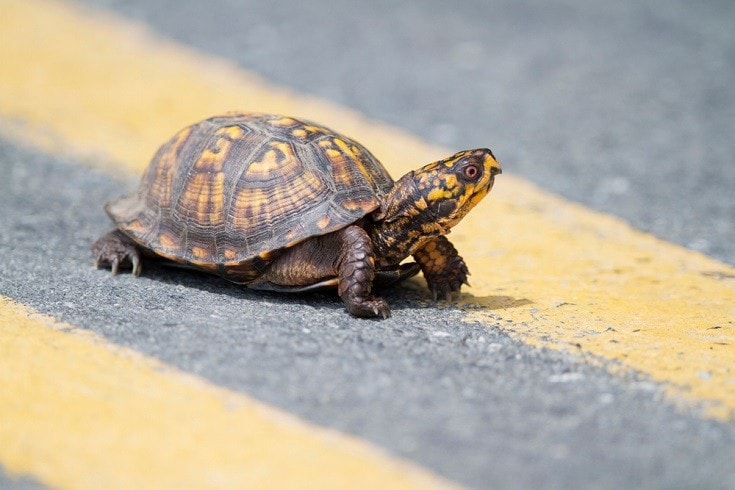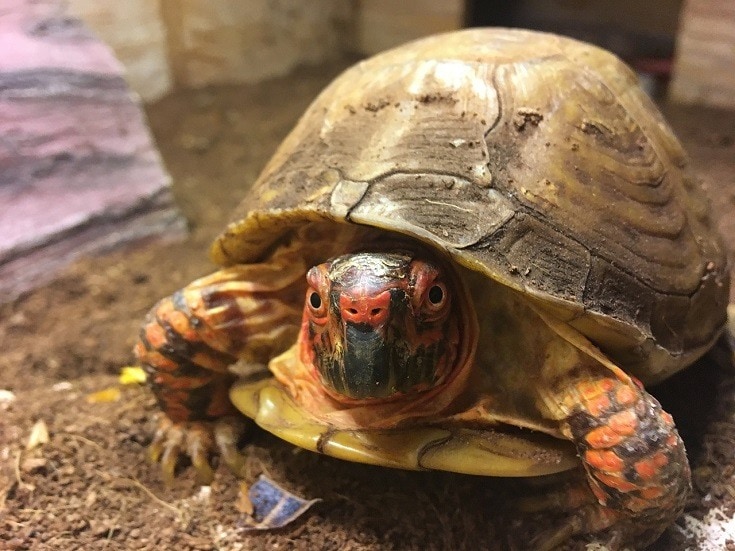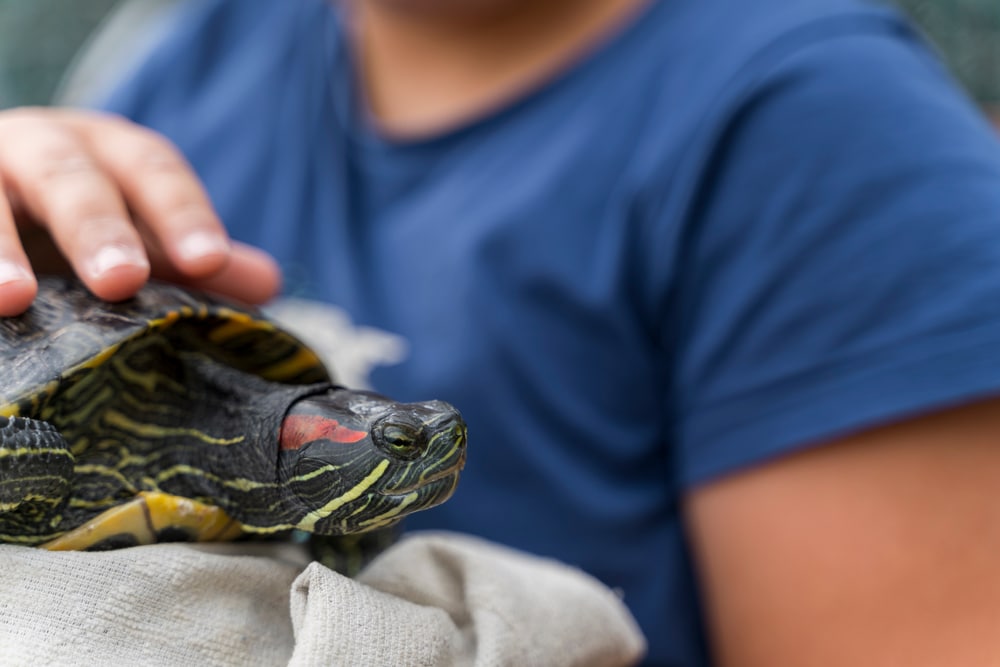
Box turtles are fascinating reptiles with long lifespans in both the wild and when kept as pets. These turtles can easily live for several decades when cared for properly, and a very important factor in their longevity is a healthy diet.
North American box turtles are of the genus Terrapene, and species of box turtles seen as pets include the eastern box turtle, Gulf Coast box turtle, three-toed box turtle, and the western ornate box turtle. All box turtles are classified as omnivores, and as such, they will eat a wide variety of animal and plant-based foods both as pets and in the wild. The proportion of these foods depend on both the age and species of box turtle, as some are more carnivorous than others.
In this article, we’ll take a look at what the best diet is for box turtles kept as pets, as well as what their natural diet is in the wild.
What Do Box Turtles Eat in the Wild?
This article is geared towards the genera Terrapene, which includes all North American box turtles. It does not discuss the diet of the Asian box turtle species.
In the wild, box turtles can typically be found roaming wooded areas, eating a largely omnivorous diet. There are six species of box turtles and various subspecies that can be found in Northern America, and their diet will depend in large part on their unique locality. That said, they will typically eat a wide range of fruit, vegetables, and leafy greens, and invertebrates. They are opportunistic and will even feed on carrion if given the chance.

In general, hatchlings and young box turtles are more carnivorous, and they’ll gradually gravitate toward an omnivorous diet as they get older. In the wild, box turtles’ diet consists of a variation of the following:
What Do Box Turtles Eat as Pets?
The key to ensuring a healthy diet for a pet box turtle is to make sure they are getting a variety of fresh foods every day. Commercial box turtle food can be purchased in pet stores or online and is a great way to make sure your pet is getting adequate nutrition and vitamin ratios, but fresh food is essential too.
Anecdotally, some owners insist that it’s good practice to only feed your box turtle a full meal every second day or so and stick to a small snack in-between. This, of course, depends on the age of your box turtle, as well as the time of the year.

Box turtles will enjoy a wide variety of foods, and around a 50/50 ratio of plant-based food and animal-based food is ideal for a healthy adult in maintenance. The following fruits and vegetables are ideal for box turtles:
As mentioned earlier, box turtles are omnivores and need insects and other animal foods in their diet too. These can be bought from most pet stores or suppliers and include:
Please note that you should not offer your turtle insects caught from your garden (or an area around your house). Capturing wild insects not only disrupts local ecosystems but may also pose a threat to your pet’s health.
Adult vs. Baby Box Turtle Diet
Ensure that it is legal to own a hatchling where you reside before adopting one. Federal law in the US prohibits adopting a turtle with a carapace (shell) shorter than 4 inches (10 centimeters). This section is mostly for informative purposes.

Hatchling box turtles have specialized dietary requirements for the first few years of their lives and need a lot more protein than adults. Some owners recommend giving babies a completely carnivorous diet. It is estimated that juvenile freshwater turtles require anywhere from 45 – 55% protein in their diet. However, this should also be accompanied by a diet that contains under 15% fat. Otherwise, the high amounts of protein will likely lead to an obese pet or issues with proper shell formation and development.
To prevent overnutrition, most veterinarian nutritionists recommend protein at around 25% for a young, healthy juvenile turtle. This is very important because excess nutrition is very detrimental for turtles. Overfeeding a young turtle will cause their shell to become deformed and appear more cone or pyramid-like. This is also known as shell pyramiding.
Box turtles grow very rapidly in the first 4-5 years of life, at which point they reach sexual maturity and their growth rate slows significantly. Still, they continue to grow throughout life, and there’s no specific point or age where they reach full size as they are cold-blooded animals (so they continuously grow). At around 6 years old their growth slows, and they’ll need less caloric intake than before. You can even refrain from feeding them a full meal on occasion and just stick with a small snack. This is common practice with reptile husbandry, and it is even beneficial to let your turtle fast for a day every couple of weeks.
A postulated diet for pet adult eastern/ornate box turtles in literature comprised the following:
Source: https://pubmed.ncbi.nlm.nih.gov/37661549/

Foods to Avoid Feeding Your Box Turtle
In the wild, box turtles will likely nibble and taste everything they come across, and as their diet has such a wide variety there is very little to avoid giving them. There are, of course, some foods that should be strictly avoided, including:
Summary
Box turtles have a widely varying diet in the wild, nibbling and tasting most things they come across. As such, feeding them as pets should consist of the same wide variety of animal-based proteins, fruits, and vegetables, as this will give them a diet closest to their natural diet.
Given the complexity of the nutrition of pet turtles and how a wide number of factors can influence your pet’s nutritional requirements, it is important to consult a veterinarian to come up with a nutritional plan for your pet.
- Related Read: 100+ Pet Names for Turtles, Tortoises, & Terrapins
Featured Image: Mark_Kostich, Shutterstock











